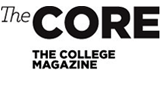
Chicago: City on the syllabus
The new Study Chicago quarter lets undergrads study abroad at home.
Carrie Golus, AB’91, AM’93
“Pullman is now the utopia George Pullman wanted it to be,” says Jane Baxter, a docent for the Pullman State Historic Site. What she means is that Pullman has a strong sense of community: there’s a wine club, a bridge club, a Scrabble club, a Morris dancing club. On the grounds of the old Pullman railcar factory, residents garden and keep bees.
Baxter, who fell in love with the neighborhood while doing archaeological work, moved here eight years ago. “There’s certainly a lot of dystopia in the utopia,” she admits. The historic area lacks such basic amenities as a grocery store, a coffee shop, or a bar (its founder would be pleased about that).
It’s late April 2015, two months after President Barack Obama designated Pullman—one of the first planned industrial communities in the United States and scene of the violent 1894 strike—a national monument. It’s also Friday, excursion day for the 20 undergrads enrolled in the pilot offering of the Study Chicago quarter. So far this quarter, they’ve visited the Chicago History Museum, the Loop, and South Works, formerly the site of the US Steel factory on the Southeast Side.
Chelsea Fine, a public policy major in the Class of 2016, is one of the few students who’s already been to Pullman. Katherine Aanensen, a geography major who’s also Class of 2016, is seeing Pullman for the first time: “I’m freaked out by it,” she says.
Baxter unchains the gate to the factory grounds; you can’t go in without a docent. The Pullman factory, where workers made the luxury railroad cars popularly known as Pullman cars, opened in 1881, Baxter says. By 1882, the workers were striking.
Baxter’s archaeological research has revealed how dangerous the factory was. When workers were seriously injured, she says, their shirts would be cut off so they could be treated by the factory surgeon. From the number of shirt buttons she excavated, Baxter deduced that a worker was seriously injured every day.
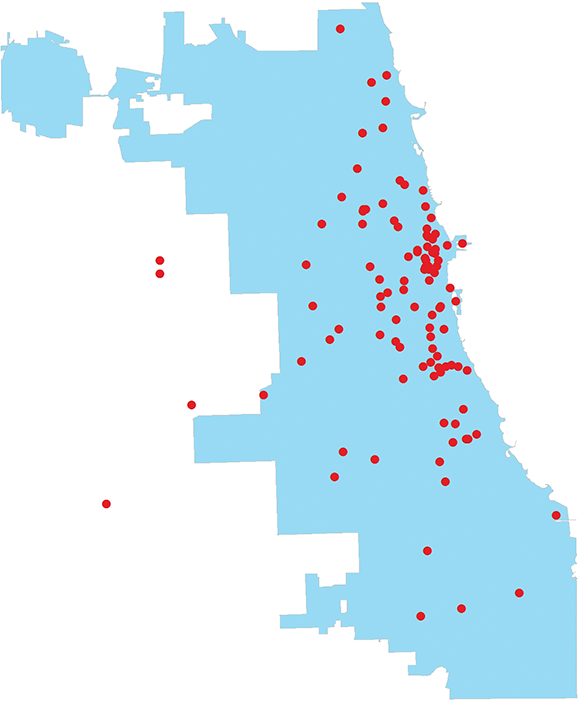
Geography major Katherine Aanensen, Class of 2016, created a series of Chicago maps for her final project. This map shows the sites the students visited as a group, as well as places their teachers recommended they visit on their own.
The factory burned in 1998. The buildings are now barren; the floor is sand and gravel, with a crop of low weeds where light streams in through grimy windows. “I love buildings like this,” Baxter says. Soon the factory will be “sanitized,” she adds, complete with “restrooms and movies and gift shops.”
After the factory tour, the students make a quick stop at the Historic Pullman Foundation’s visitor center, now functioning as a makeshift federal museum. They watch a low-budget black-and-white documentary that describes the factory as “safe” and Pullman as “the world’s most perfect town.” The students giggle.
That’s exactly what Kathleen Conzen, the Thomas E. Donnelly Professor Emerita of History, wanted them to notice, she says later: “How historical interpretation can vary.”
The formal tours over, students fan out to explore on their own. Fine and Aanensen skirt the edge of the park, heading toward the greenstone church, which looks like it belongs in Emerald City.
Fine stops frequently to snap photos of the front doors of the row houses, where factory workers could not sit on the stoop, plant their own plants, or even hang a picture on the wall. She’s fascinated that the town was designed “to induce certain behaviors,” with the church at its center and no bars.
“We’re here at a really cool time,” she says. Although Pullman has been named a national monument, not much has changed yet. It’s still a neighborhood, with lifelong residents and newcomers, pristine houses and run-down ones.
“What’s going to happen to it now?” Aanensen wonders.
“I hope they don’t ruin it,” Fine says, echoing Baxter. “Make it cheesy.”
They spot three students coming out of a worker’s cottage. The owner, Ben, invites them in for an impromptu tour too.
The three-bedroom cottage is tiny and perfect, with its original stove and icebox (now used for storage). A sign outside explains that in 1900, cabinet maker Chas Preikshot lived there with his wife and five children. Ben bought the house in 1979 for $17,500; at the time, he says, he wondered where he would get the 10 percent down payment.
“You visit all these places,” Aanensen says afterward, “and Chicago just seems so big.”
A few years ago John W. Boyer, AM’69, PhD’75, dean of the College, was chatting with some of the students in his History of Western Civilization course in Vienna. “They had been in Vienna for three or four months,” he says, “and they were telling me things about the city that I didn’t know.”
Boyer teaches regularly in the Study Abroad program in Vienna. A scholar of the Habsburg Empire, he’s been traveling to the city for 40 years. “I found this not a little charming,” he says, “that really bright and ambitious students would move to a place and make it their own so quickly.”
Upon reflection, he realized that students in Hyde Park—with extracurricular activities and jobs, and without the Friday excursions that characterize the College’s Study Abroad programs—might not know as much about Chicago. He wondered, “Would it be possible to take that model of the study abroad program and repatriate it back to Hyde Park?”
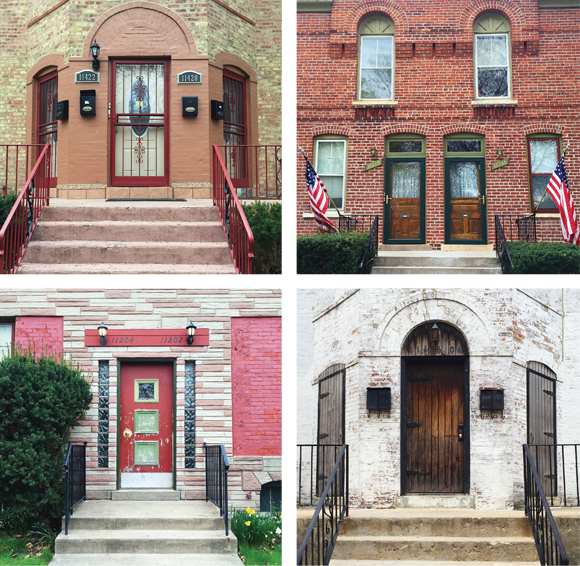
Public policy major Chelsea Fine, Class of 2016, photographed front doors in Pullman for her final project.
Boyer wanted the program to include history, of course. Also public policy: “Chicago, of all the great American cities, is actually the most studied city in terms of social science research,” he says. “It’s an incredible urban laboratory.”
He persuaded Conzen, who retired in 2012, to teach the history course, which she called Making Chicago: Chapters in the City’s History.
To fit with that title, Chad Broughton, AM’97, PhD’01, senior lecturer in public policy studies, named his course Remaking Chicago: The City that Works on Social Change. He wanted to focus on “change agents,” he says. Rather than merely studying social problems, he wanted to look at potential solutions.
A humanities course, Representing Chicago: The City in Art, Literature, and Music, taught by Paul Durica, AM’06, PhD’13, completed the academic requirements of the Study Chicago program. The students could choose to enroll in a fourth course, as long as Fridays were kept open.
Chicago isn’t Conzen’s area of research. She specializes more broadly in American urban history, immigration and ethnicity, Western settlement, and 19th-century social history. But for years she taught a colloquium for undergraduates, Chicago and the South Side, which used neighborhood history to engage students with research methods.
Conzen always gave the same first assignment. Students were told to walk around two blocks in Hyde Park, looking, really looking, for the first time.
“One marvelous paper grew directly out of that walking,” says Conzen. Stephanie Dock, AB’06, walked past a small playlot on Woodlawn Avenue. After much archival research, she discovered that in the 1930s, too many children were being run down by automobiles. So the Chicago Motor Club began sponsoring contests for privately run playlots, to prevent kids from playing in the street. “She helped explain a ubiquitous feature of Hyde Park, all these pocket parks,” says Conzen. “But also a significant chapter in American history.”
The paper was printed in the 2008 issue of the College’s undergraduate academic journal, Chicago Studies. It was also excerpted in the Spring/Summer 2009 issue of this magazine.
Conzen began her Study Chicago course with the same two-block assignment: “What do you observe? What kinds of historical questions do your observations raise for you? Why might they be worth answering?”
“It’s a big city, and students don’t often see a lot of it,” says Broughton. “Often the students are told to stay within the certain confines of Hyde Park. So we wanted to flip that a little bit.”
By late May, the Study Chicago group had toured the offices of public radio station WBEZ and alternative weekly newspaper the Chicago Reader. They had seen downtown from City Hall’s roof garden and met mayor Rahm Emanuel. They had attended the play The Project(s) about Chicago’s public housing system.
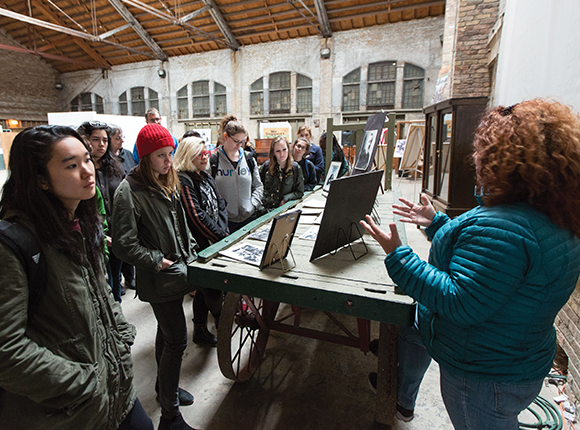
Inside the Pullman factory, docent Jane Baxter (right) talks about working conditions. The buildings—chilly even in April—were not heated. (Photography by John Zich)
They had visited the Inner-City Muslim Action Network (IMAN), cofounded by Rami Nashashibi, AM’98, PhD’11, in the West Side neighborhood of Chicago Lawn. The organization’s wide-ranging programs—all intended to connect the Muslim and African American communities—include a health center, a farmers’ market, a youth and wellness space, an annual hip-hop festival, and a reentry program for former prisoners. During the tour, students walked through a bungalow covered in Satan’s Disciples graffiti. Participants in the Green ReEntry program would learn carpentry skills by fixing it up.
On the same excursion, the students visited the Greater Englewood Community Development Corporation (GECDC), headquartered in a grand art deco bank on the corner of 63rd and Halsted. Englewood was once the second largest shopping district in Chicago outside of downtown, they learned. The GECDC plans an ambitious revival: a call center with 1,200 jobs, a small business accelerator, a technology training center for young people, Whole Foods, Chipotle, Starbucks.
“I’ve lived in Chicago about 16 years,” says Broughton, “and I went to so many places that I had never been.”
Students in his Remaking Chicago course also had fieldwork assignments to pursue on their own. Both the topic and the form were wide open.
Ethan Stockwell, Class of 2016, produced a podcast on the accordion-playing community in Chicago. Miki Takeshita, Class of 2017, went to a Buddhist temple in Uptown. “They really embraced her, as a granddaughter almost,” says Broughton. “She learned a lot about the Japanese American community here, but also came to a richer understanding of her own identity.”
Durica sent students out for his Representing Chicago course too. They wrote two essays based on Ben Hecht’s A Thousand and One Afternoons in Chicago (Covici-McGee, 1922), originally a series of newspaper columns. The first assignment was to write about “some aspect of everyday life in the city,” Durica says. The second assignment had to be about a cultural experience.
For the first, Katherine Aanensen wrote about standing on the 47th Street Red Line platform in the middle of the Dan Ryan Expressway at 10 p.m. “I likened it to looking at the lake,” she says. “The idea of the cars and the lake, pulling you in.”
For the second, she attended an experimental music concert at Myopic Books in Wicker Park. “There were two performers—bass clarinet and drums—and at any given time maybe four people listening,” she says. The music sounded like “angry geese.”
“I wrote about aliens,” she says. “Aliens among us.”
It’s the last meeting of Representing Chicago. One of Durica’s students had asked if there was a modern-day version of the Dill Pickle Club, a bohemian hangout founded in 1914. So Durica decided to hold class at the Hideout, a small, unprepossessing club in West Town.
“Creative communities,” as Durica calls them, were the focus of his course: not just writers but publishers, editors, visual artists, patrons. Durica also wanted to make connections between the creative communities of the past and the present.
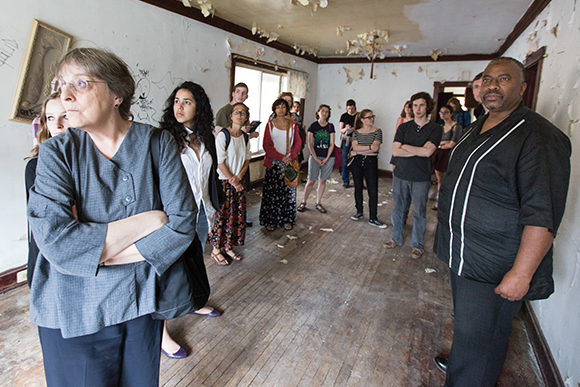
Professor Kathleen Conzen (left) and the students tour a Marquette Park bungalow owned by Inner-City Muslim Action Network. Former prisoners will learn construction skills by renovating it. (Photography by John Zich)
So he’s invited Dmitry Samarov and Bill Savage to the Hideout. Samarov is the author of an illustrated memoir, Hack: Stories from a Chicago Cab (University of Chicago Press, 2011). Savage is there not only as Samarov’s editor but also as the editor of the annotated edition of Nelson Algren’s Chicago: City on the Make (University of Chicago Press, 2011).
Savage and Durica have worked together too. They coedited a new edition of Chicago by Day and Night: The Pleasure Seeker’s Guide to the Paris of America (Northwestern University Press, 2013), originally written for visitors to the 1893 World’s Columbian Exposition.
In the back room, an unseen band is rehearsing. When the Hideout opened in the late 1800s, Durica tells the class (shouting a little over the band), the neighborhood was a manufacturing area and the bar was for laborers. (The Hideout name dates to 1934.) Algren lived on the same street, Wabansia Avenue, though his section no longer exists because of the interstate.
The band launches into “Summer Nights” from (coincidentally) the Chicago musical Grease.
“What was the literary scene like in the 1940s?” Durica asks Savage.
“Divided and multiple, like today,” Savage says.
“Tell me more, tell me more,” the band sings encouragingly.
Algren couldn’t publish novels in the 1950s, Savage explains (to the class, not the band), as society became more conservative. He “just barely” made a living as a writer. He would have come to places like the Hideout. The music probably would have been jazz.
The discussion turns to Hack. “What makes it a Chicago text?” a student wants to know.
“I found out it was a Chicago book after I wrote it,” says Samarov. “Nobody outside Chicago seemed to give a shit about it. Whether I set out to write a Chicago book or not, I certainly wrote one.” He took notes, he tells another student, by text message and Twitter.
The conversation circles back to Algren. “What attracted artists to this part of the city?” Durica asks.
“It was cheap,” says Savage. “And these were the marginalized people he wanted to write about. By the way, Algren never would have called it Wicker Park. It was the Near Northwest Side.”
This comment inspires Samarov to reminisce about his own time living in Wicker Park as an art student in the early 1990s. When a neighborhood gentrifies, he says, “first the art kids move in, then the gay people, and then it’s safe for yuppies.” The students laugh uproariously, having evidently never heard this urban truism before.
Savage, an Algren devotee and a teacher himself, throws out a question to the students. “Someone pick a favorite line from City on the Make.”
There’s a terribly awkward moment of dead air. Even the band stops playing.
Finally someone makes the anodyne observation that the book is like a love letter to Chicago.
“Do you think of your book as a love letter to Chicago?” Savage asks Samarov. He says he does.
I like Chicago,” says Chelsea Fine. “I just don’t really like it compared to some of the places where I’ve lived. When we were at the Hideout, I think Dmitry said it best: You have to study the places where you live, because that’s how you’re going to enjoy yourself there. That’s why I did this program, to force myself to learn about the city and get out more.”
At the end of the quarter there’s a celebration at Greenline Coffee on East 61st Street in Washington Park. It’s just blocks from south campus, but like so many places this quarter, it’s not somewhere that undergrads would usually go.
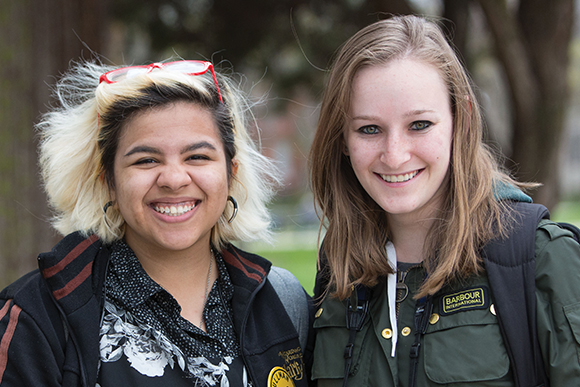
Katherine Aanensen (left) grew up in a suburb of New York; the other cities she knows well are Toyko and Hiroshima, Japan, where she has relatives. Chelsea Fine (right) grew up in Phoenix; Berkeley, California; Washington, DC; and McLean, Virginia. Last year she studied abroad in Paris. (Photography by John Zich)
A few students have been chosen to reprise their “teachback” assignments from Durica’s class. “They had to isolate some bit of what they had gained,” he says, “something new they had experienced, some new community they had encountered, and share it with the group.”
There are slideshows, poems, a dramatic monologue, a collage. Nicholas Bocanegra, Class of 2016, holds up a piece of slag from South Works, the former US Steel site. “This slag represents everything I loved about this program,” he says: not only the city’s 19th century past but also its future. The other students applaud madly; someone shouts “Woo-hoo!”
Fine shows her photographs of Pullman’s doors and explains that she will be giving one to everyone in the program. “I ask that you keep your photo and revisit the neighborhood again at some point to see how it has changed,” she says.
Aanensen, a geography major, did a mapping project for her teachback assignment. She used geographic information system software to map the places the group visited, or had been recommended to visit on their own. On top of that, she laid existing maps: a heat map made after the heat waves in the 1990s, a sociological map of Chicago community areas, the coastline of Chicago. “I wanted to see what we studied in relation to what has been studied about Chicago,” she says later.
The College will offer the program again this spring. Boyer hopes that eventually it will be offered every quarter and that the courses might vary. “We could have done religion, architecture, Lake Michigan, food history, music.”
Boyer, who grew up in Roseland, just west of Pullman, saw the exteriors of the old factory buildings up close, decades before they burned. “To be candid, against the express wishes of our parents. This was not a safe place for young kids,” he says. “I also once dated a girl whose family lived in one of these houses. I remember being impressed with how well designed it was and how stable the neighborhood was.”
When he enrolled in Loyola University Chicago in Rogers Park, it was the first time he had ever been to the North Side. “So I remember in my own life discovering that there was a bigger city out there than just the South Side of Chicago. And how confusing the North Side is,” he says. “I still get lost up there.”
